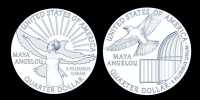Bendix Corporation, a former American corporation, was founded in 1924 to manufacture automobile brake systems. In 1983 it became a subsidiary of Allied Corporation (see AlloyedSignal), which merged with Honeyway in 1999. Bendix endorsed his invention, which was described as a “New York device for starting an explosive motor.” The company has developed a low-cost triple thread screw that can be used to make other drive parts. For most of the twentieth century, Bendix was a supplier and top supplier of automotive components, house building materials, and other equipment.
The corporation’s founder, Vincent Bendix, bears the name of a motor engineer who created mass-generating methods for the triple thread screws needed to apply electric starters to automobiles. In 1913, Bendix licensed his method to the Eclipse Machine Company, a manufacturer of bicycle parts. Victor Bendix registered five patents at the Canadian Patent Office for improved engine starters between 1919 and 1926. The founder of the company, Vincent Bendix, himself an inventor, joined the French inventor Henry Perrot to create the brake system in the South Bend, India, in 1924; By 1928, Bendix Corporation was producing 3,600,000 brakes per year, mainly for General Motors Corporation. In 1928, Bendix gained a majority interest in the Eclipse Machine Company. General Motors, Eclipse’s largest customer for starter drives, accepted the 6.8 million note and offered to assist in the transaction. That year Bendix accounted for about 25% of the market available for breaks. Bendix later adapted its braking systems for use on the aircraft as the technology and manufacturing process were similar. The aircraft market was growing rapidly, and Bendix was determined to join. Apart from producing a few parts, Bendix had almost nothing to do with the popular washer. The company disposed of its shares of Bendix Home Appliances in 1940. These auto, aircraft, and rail mechanics are at high risk of exposure as the remaining dust easily turns into the air as a result of use if the surrounding equipment is broken down. Up to 50% of the asbestos content at the height of the Asbestos Craze in 1972 was brake pads and shoes.
General Motors led the unsatisfactory business situation during 1937, during which time Bendix had a 25% stake in establishing two board members and starting the restructuring of the company; Activities were streamlined, management was centralized, and costs were reduced. In 1956, Bendix, known as the “Electrojector”, was a true multipoint electronic fuel injection system that was the epitome of 1958 model motor vehicles built by Chrysler Corporation. Bendix suffered significant losses, including General Motors as a shareholder, in a return to peaceful production. GM sold 400,000 shares of the company in 1944. Bendix surpassed its advantages in the South Bend and in 1951 set up a second, larger plant in nearby Mishawaka. The same year it re-entered military manufacturing projects with the outbreak of the Korean War. In the 1960s, Bendix automotive brakes flourished with the introduction of fixed-caliper disc brakes and the “Duo-Servo” system (which has virtually become a world-class for drum brakes). In the 1960s, Bendix also ventured into bicycle hardware, creating planetary rear axles with a reliable, completely self-contained, 2-speed “kick-back” coaster brake. The company became an affiliate of Allied Corporation in 1983. Despite growing knowledge of the dangers of asbestos, Bendix’s brake components continued to add asbestos until 1987. Honeywell, the current parent of Bendix, has continued to sue the Asbestos for the Bendix brand break. The former Bendix automotive, aerospace, and electronics operations, however, remained with Allied-Signal. The company continues to use the name Bendix for brand recognition in its automotive group.
















